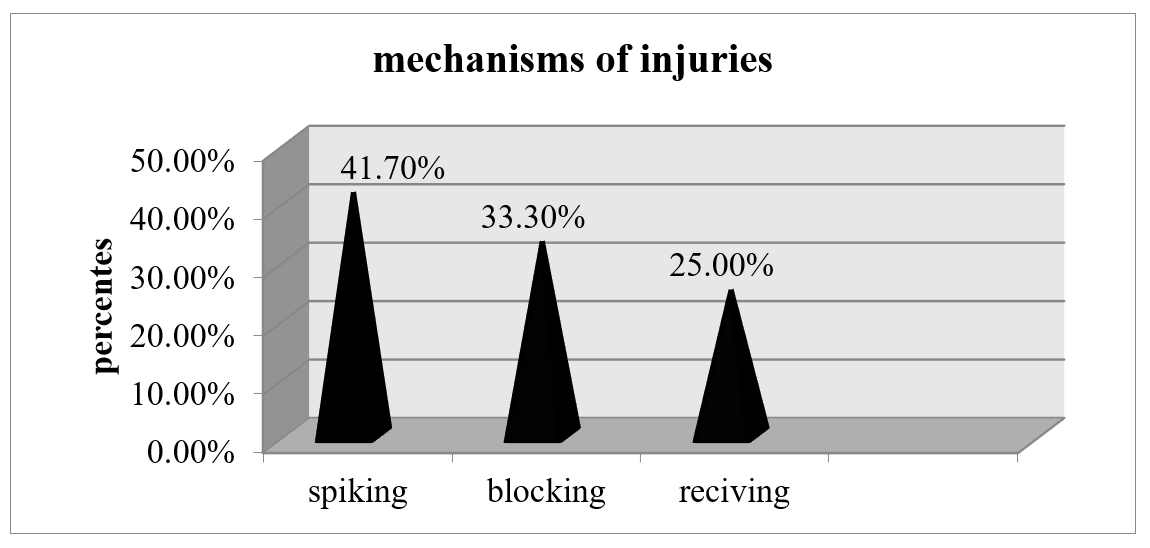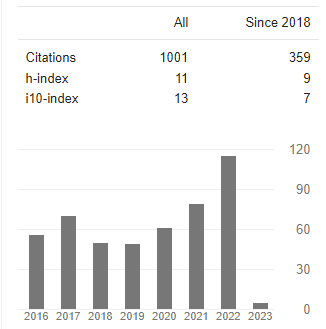Prevalence and cause of Volleyball sport injury in the case of Female Volleyball clubs in Hadiya Zone, selected Woredas, Ethiopia.
Abstract
The aim of this study was to determine the prevalence of injuries, injured body part and factors on volleyball players of a club in, Soro wereda, Duna wereda ,Lemo wereda and Hosanna city in the season of 2023 G.C. Descriptive survey study was used. For this study all players, coaches and physiotherapist was included on the four selected clubs (48) volleyball players, (4) coaches and (3) physiotherapist. A self– administered questions and observation were used. The collected data were taken and analyzed by means of the Statistical Package for Social Science version 20.0. The results are displayed using table and figures. Response rate of 100% was obtained, 100% of the volleyball players experienced with one or more injuries in the season, 57 injuries occurred on the seasons and the rate were 1.18 per players. Among the injured players knee (27.1%), abrasion (25%) finger injuries showed each (20.8%). Players in the left and right front row were more exposed to injury at the time of spiking & blocking, higher injury occurred due to contact with players and wrong landing. Most injury occurred during the 3rd, 4th and 5th set of the game. Knee, abrasion and finger injuries were the most common types of injuries occurred to players. Above half of the injured players were not used kneepads. Playing court also increase the prevalence of injury. Players were not getting access of water during match & training. Physiotherapy services were functional in the club due to this they were minimize absence of players from training and match’s physiotherapists. Finally most injuries were occurred due to extrinsic factors.
Downloads
References
Agel, J., Palmieri-Smith, M., Dick, R., Wojtys, M., & Marshall, W. (2007). Descriptive Epidemiology of collegiate women’s volleyball injuries: national collegiate athletic association injury surveillance system, 1988-1989 through 2003-2004. Journal of athletics training, 42(2): 295-302.
Augustsson, S., Augustsson, J., Thomee, R., & Svantesson, U. (2006). Injuries and preventive action in elite Swedish volleyball. Scandinavian Journal of Medicine and Science in Sports, 16: 433-440.
Bahr, R., & Bahr, A. (1997). Incidence of acute volleyball injuries: a prospective cohort study of injury mechanisms and risk factors. Scandinavian Journal of Medicine and Science in Sports, 7(3): 166-71.
Briner, W., & Kacmar, L. (1997). Common injuries in volleyball. Mechanisms of injury, prevention and rehabilitation. Journal of Sports Medicine, 24(1): 65-71.
Federal government stateretrieved from hittps://www.ethiopia government.
Hassan, A. (2008). Prevalence and patterns of injury among volleyball players on the university of Western Cap clubs.
Hawkins, D., & Metheny, J. (2001). Overuse injuries in youth sports: biomechanical Considerations. Medicine & Science in Sport & Exercise. 33(10): 1701-1707.
Jibuike, O., Paul-Taylor, G., Maulvi, S., Richamond, P., & Fairclough, J. (2003). Management of soft tissue knee injuries in an accident and emergency department: the effect of the introduction of a physiotherapy practitioner. Emergency medical journal, 20:37-39.
Kraemer, J., Adams, K., Cafarelli, E., Dudley, G., Dooly, C., Feigenbaum, M., Fleck, J., Francklin, B., Fry, C., Hoffman, R., Newton, U., Potteiger, J., Stone, H., Ratamess, A., & Triplett-McBride, T. (2002). American College of Sport Medicine Position Stand. Medical Science and Sports Exercise, 34: 364-380.
Lian. O., Refsnes, P., Engebretsen, L., Bahr, R. (2003). Performance characteristics of Injuries and preventive actions in elite Swedish volleyball players with patellar tendinopathy. American journal of Sports Medicine, 31: 408–413.
Malliaras, P., Cook, J., & Kent, P. (2006). Reduced ankle dorsiflexion range may increase the risk of patellar tendon injury among volleyball players. Journal of Science and Medicine in Sport, 9:304-309.
Nelson, A., Collins, M., Yard, E., Fields, J., & Comstock, R. (2007). Ankle injuries among United States high school sports athletes, 2005-2006. Journal of Athletics Training, 42(3):381- 387.
Ozbek, A., Bamac, B., Budak, F., Yenigun, N., & Colak, T. (2006). Nerve conduction study of ulnar nerve in volleyball players. Scandinavian Journal of Medicine and Science in Sport, 16(3): 197-200.
Reeser, J., & Bahr, R. (2003). Hand Book of Sport Medicine and Science: Volleyball. USA: Blackwell Publisher.
Reeser, J., Verhagen, E., Briner, W., Askeland, T., & Bahr, R. (2006). Strategies for the prevention of volleyball related injuries. British Journal of Sports Medicine, 40(7): 594-600.
Salci, Y., Kentel, B., Heycan, C., & Akin, S. (2004). Comparison of landing maneuvers between male and female college volleyball players. Clinical biomechanics, 19(6): 622-628.
Stasinopoulos, D. (2004). Comparison of three preventive methods in order to reduce the incidence of ankle inversion sprains among female volleyball players. British Journal of Sport Medicine, 38: 182-185.
Stone, K., Seeley, D., Lui, L., Cauley, J., Ensrud, K., Browner, W., Nevitt, M., & Cummings, S. (2003). BMD at multiple sites and risk of fracture of multiple types: Long-Term results from the study of Osteoporotic fracture. Journal of Bone and Mineral Research, 18(11):1947-1954.
Verhagen, E., Van Der Beek, A., Bouter, L., Bahr, R., & Van Mechelen, W. (2004). A one session prospective cohort study of volleyball injuries. British Journal of Sports Medicine, 38(4): 477-81.
Wang, H., & Cochrane, T. (2001). A descriptive epidemiological study of the shoulder injury in top level English male volleyball players. International Journal of Sports Medicine, 22(2): 159- 63.
Zemper, E., & Pieter, W. (1989). Injury rates at the 1988 U.S. Olympic Team Trials for Taekwondo. British Journal of Sports Medicine, 23(3):161-164.

Copyright (c) 2025 Behailu Shigute

This work is licensed under a Creative Commons Attribution 4.0 International License.














